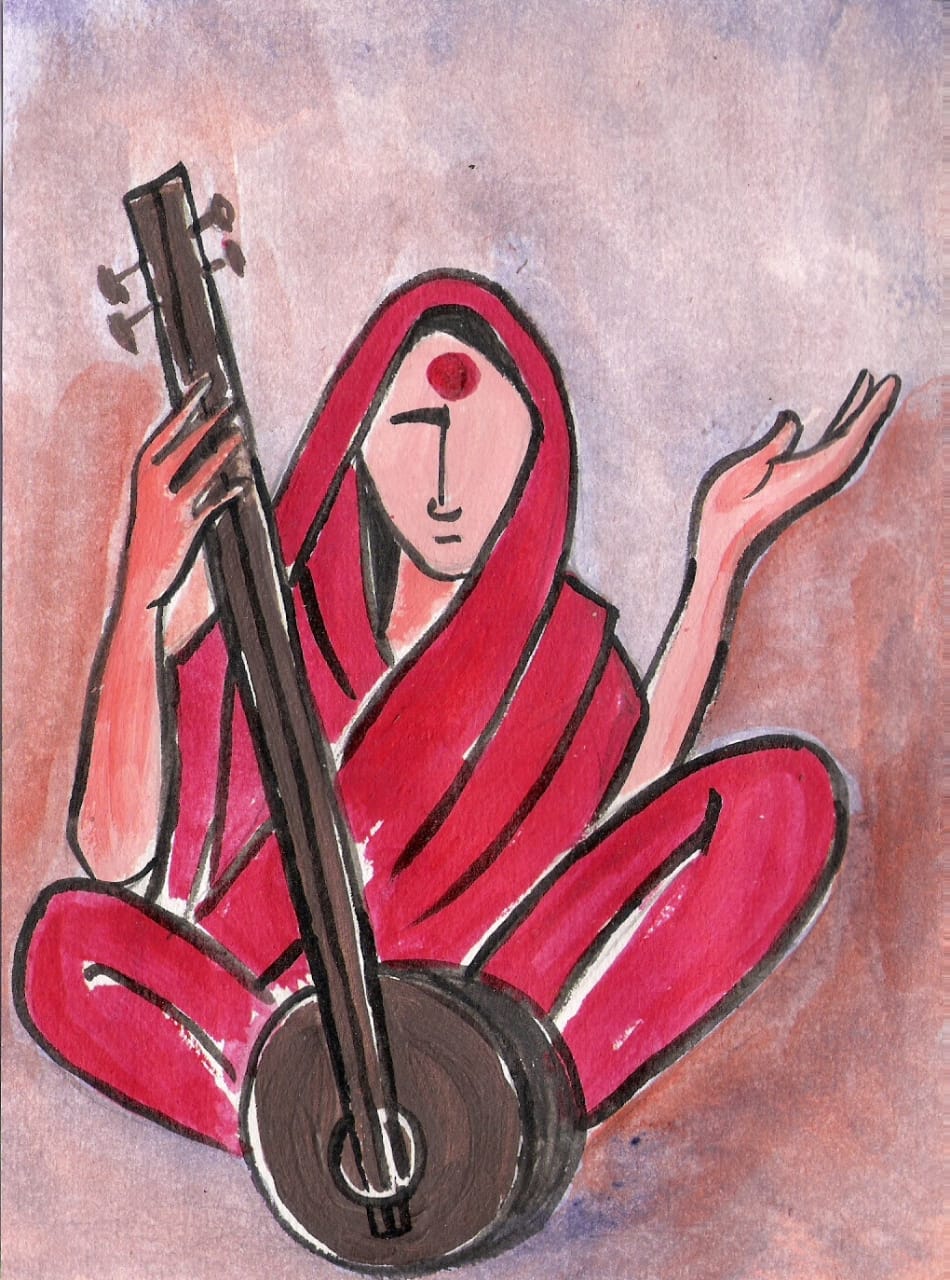A popular Krishna devotee and poetess was born into the royal family of the Rathore clan in the 15th century in a small village in Rajasthan. We are familiar with the prominent figure of Vaishnavite Bhakti Movement, Meerabai. Her hagiography is constructed by weaving together the details extracted from her poems, which are documented in social memory through the tradition of oral recitation and singing, the stories narrated by members of her community, and the myths and folk tales that are deeply embedded in the cultural settings in which her life unfolded.
This article reflects on the poetic innovation and composition style of Meera and through it discovers the prominent reasons for her being alive in the collective consciousness of our society even after 500 years of her birth. It also examines the relationship she establishes with her listeners as her poems received wide acceptance and popularity by crossing geographical boundaries, and linguistic and cultural barriers through centuries.
Meera was born into an aristocratic Hindu family. Though she was an integral part of a social system and worldview that promulgated little self-determination and liberation for women, it is believed that she was introduced to the formal education system which included attaining excellence in music, religion, philosophy, instructions in politics, and public policies. Raised as an intelligent, opinionated, and knowledgeable person in a world which attempts to bind women in various nooses, poetic imagination turned out her refuge as she carved her notions of life which were devoid of rigid conventions of the physical world. Her poems give an expression to her voice which refuses to remain constrained within societal expectations and serves as a mode through which she seeks to attain social, intellectual, and spiritual upliftment.
Her desire to rethink the laid-out rules and conventions, instead of blindly following them, extends through her poetry. As a poetess, she breaks free from the laid-out literary rules of compositions and themes. Her poetic compositions are spontaneous in their genesis, composed in vernacular languages and dialects, enriched with regional imageries of flora and fauna, and metrical patterns inspired by folk musical traditions. It is no wonder then that her voice amalgamated with the many voices and gained popularity in local village fairs.
Along with her poems, stories and narrations related to her life have received wide acceptance in various regions of India. For instance, stories depicting her childhood, her life as a royal princess, as a student, as a married woman, and as a widow who refuses to self-immolate herself in the funeral pyre of her husband are very popular. Legends portray her as a Krishna devotee who deserts her royal attire and privileges to join the company of sadhus to wander on the streets and sing, dance, and celebrate her love for Krishna with fellow people without maintaining the rigid boundaries of caste practices.
It is interesting to see her as not being consciously rebellious. Her poems and her worldview stem from her personal and religious experiences and serve as a medium to question social institutions. By portraying her love and devotion for Krishna, she seeks physical and spiritual liberation. Her poems are devoid of any didactic overtones. She did not form or become part of any pre-existing cult.
Her poems constitute among the finest products of the corpus of Bhakti Literature where complex mystical philosophies effectively unite with her raw emotions. Her poetry is infused with the joy of the voice that seeks union with God, and the desire of losing one’s soul in the absolute transcendental being. In one of her poems, Meera tells us:
O my mind
Worship the lotus feet of the Indestructible One
…
Take no pride in the body,
It will soon be mingling with dust.
This life is like sporting of sparrows,
It will end with the onset of night.
She does not emphasise complex, abstract, metaphysical themes and concepts, but rather seeks spiritual liberation by uniting the mind with the body. This establishes her more as a devotee and less as a mystic. Her mystical and ecstatic practices include expressing her love for Krishna by singing her bhajans and poems infused with melody, dancing to the tunes of it with fellow gopis, and satsanga.
It is little wonder that her poems survived through the ages because of the singers who sang, modified, interpolated, and conveyed them from one generation to the next. Her songs crossed over the realms of time and space as she didn’t confine herself to any one medium of compositions. She came in contact with many regional dialects such as Braj Bhasha, Rajasthani, Khari Boli, Marwari and Gujarati. In her compositions, traces and elements of various languages are visible. Along with the simple and diversified medium of composition, her poems are enriched with images extracted from day-to-day life.
The mode of transfer as oral rather than written served to be more of an advantage. While the written medium is restricted to transporting accurate words, imageries, themes, and metrical and rhythmic patterns, the oral medium also transfers the joyful experience of spiritual bliss attained by the poet.
Instead of written documentation, the oral medium does justice to the artistic calibre of Meera. The perception of the transcendental being in the mind of the receiver may differ but through her art, the feeling and eminence of her vision unite with that of the receiver of her poems. To experience this, the widely held convention says that “Meera is meant to be sung” and therefore she forms a prominent part of oral songs and tales, folk narratives, and legends. Also in the patriarchal society where written history has always served as a tool to emphasise masculine aspects due to its focus on war, commerce, trade, and politics, it is no surprise that a figure like Meera finds an eminent space in mass memory by being more legendary and less historical.
Shweta Jha is a Master’s student studying Comparative Indian Literature at the University of Delhi.
Featured illustration: Amit Vardhan

